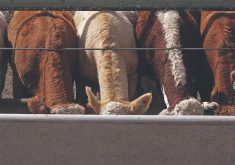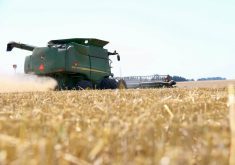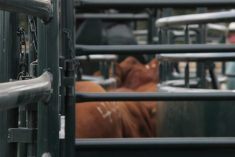Western Canadian feeder cattle under 600 pounds were up $8-$10 per hundredweight (cwt) this past week. A small group of exotic steers averaging 570 pounds sold for $170/cwt in west-central Alberta; black Angus-cross steers averaging 535 pounds touched $185/cwt in the same region. Heavier feeders were averaging $5-$8/cwt higher over week-ago levels. A mixed batch of Simmental-cross steers carrying a significant amount of flesh averaging 724 pounds sold for $154/cwt.
Buyers were after numbers this week and didn’t discount cattle even if there were noticeable adverse characteristics. Alberta packers bought cattle in the range of $115-$116/cwt this past week, up $2/cwt on average from early January.
Read Also

U.S. grains: Soybeans hit six-week low as Brazilian harvest looms; corn, wheat sag
Chicago | Reuters – Chicago soybean futures fell to six-week lows on Friday as worries about slowing export demand for…
Cash barley values in Western Canada were $2-$4 per tonne lower last week, enhancing the feeder cattle trade. Major feedlots are using a larger amount of low-protein milling-quality wheat because domestic feed values are higher than the export milling market. This trend is expected to continue over the next six months as the world wheat supplies are extremely burdensome.
December 2012 live cattle futures made new contract highs last week, touching $131. Strength in the deferred live cattle market is also supporting nearby feeder cattle prices. There is potential for a sharp drop in North American beef production in the fourth quarter and the market appears to be incorporating a risk premium due to the uncertainty in supplies.
The Dow Jones industrial average (DJIA) made six-month highs on Friday and the outlook is for stronger equity markets. Positive economic data along with historical low interest rates will continue to drive stock market values higher. There is a very high correlation between the DJIA and live cattle futures because an increase in consumer spending directly influences beef consumption.
— Jerry Klassen is a commodity market analyst in Winnipeg and maintains an interest in the family feedlot in southern Alberta. He writes an in-depth biweekly commentary, Canadian Feedlot and Cattle Market Analysis, for feedlot operators in Canada. He can be reached by email at [email protected] or at 204-287-8268 for questions or comments.















